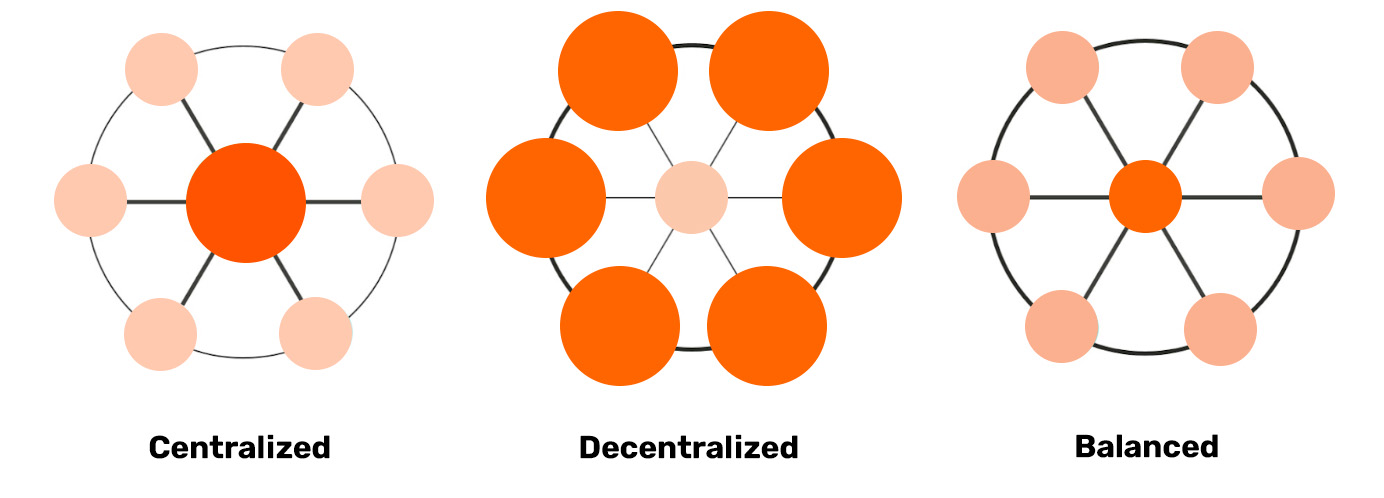
Can We Avoid Burnout?
We often use the term “burnout” as a vague label for an exhausting day or week of hard work, but actual burnout is more than just feeling a little stressed

At Dialectic, we think a lot about DEI, soft skills, and leadership training that makes organizations more inclusive and human-friendly. When we team up with clients to develop the best possible solutions for their needs, we might be talking with an L&D Lead, an HR Manager, an Executive, or some combination of these depending on the organization.
Today, we’re sharing a bird’s eye view of how L&D can be organized, based on the work of Mary Stewart, Brand Director at Emerson Human Capital Consulting. We invite you to think about how training decisions are made in your own organization. Which model most closely reflects your workplace? Does the current arrangement support your organization’s L&D priorities?

L&D is centralized when training decisions are made centrally, and the head of the L&D and their team have the budget and the mandate to develop training across the entire organization, from onboarding to leadership programs.
The Pros
The Cons
L&D is decentralized when training budgets are scattered across different departments, and each one is responsible for the creation of its own training. In smaller companies, learning might be handled by HR. In larger ones, L&D professionals might report to the leaders of specific departments.
The Pros
The Cons
Some organizations are able to strike a balance between centralization and decentralization. They have a central L&D department that controls the budget and any cross-functional training, but individual L&D professionals are embedded within other departments to meet more specific training goals.
The Pros
The Cons
There is no one best model for a learning and development function, but there is a best model for your organization and your learning goals. If you want to know more about which model is best for your organization, take a look at our Featured Resource.

This article invites you to consider which L&D structure is best for your organization and your learning goals. It presents four key considerations: the characteristics of the organization, the goals or mandate of L&D, the needs of learners, and the need for scale and efficiency.
This intermediate-level program highlights the lived experiences of Black colleagues in the workplace, ranging from “inadvertent” comments to systemic hiring discrimination. It empowers learners to identify and disrupt racial discrimination, to practice allyship, and to seek system-level changes to help combat Anti-Black Racism. This program was co-created by Camille Dundas, the co-founder of byblacks.com and a DEI and intersectionality expert.

We often use the term “burnout” as a vague label for an exhausting day or week of hard work, but actual burnout is more than just feeling a little stressed

At Dialectic, we think a lot about DEI, soft skills, and leadership training that makes organizations more inclusive and human-friendly. When we team up with clients to develop the best

Ageism commonly affects women over 40 in the workplace. In spite of their tremendous wisdom and experience, women over 40 may be passed over for new roles or promotions, or
Dialectic helps organizations improve the way people work, learn, and collaborate through person-centred design and the latest in social science.

Does your team struggle with soft skills?
Use our app or upload Snippets to your LMS to build better habits in minutes with scenario-based microlearning.
Sign up for our weekly roundup of the latest on DEI, leadership, collaboration, and learning science.
© 2024 Dialectic. All rights reserved. | Contact Us | Privacy Policy | Terms of Use | AODA Statement
See how easy it is to activate soft skills in your organization. Soft skills training on 3 key topics: DEI, Leadership, and Collaboration.